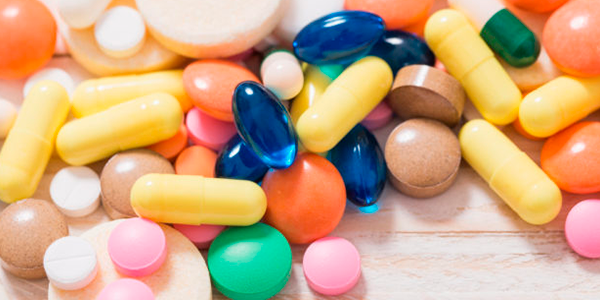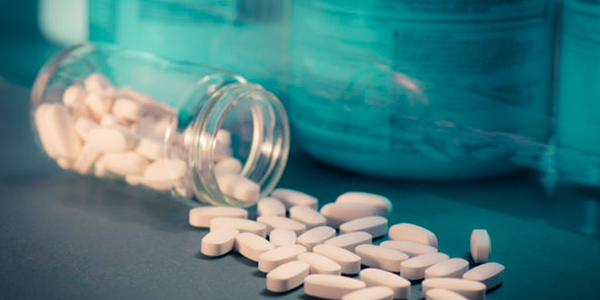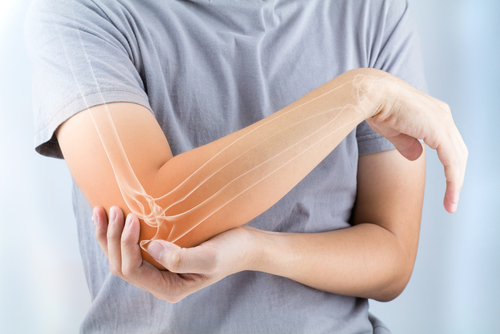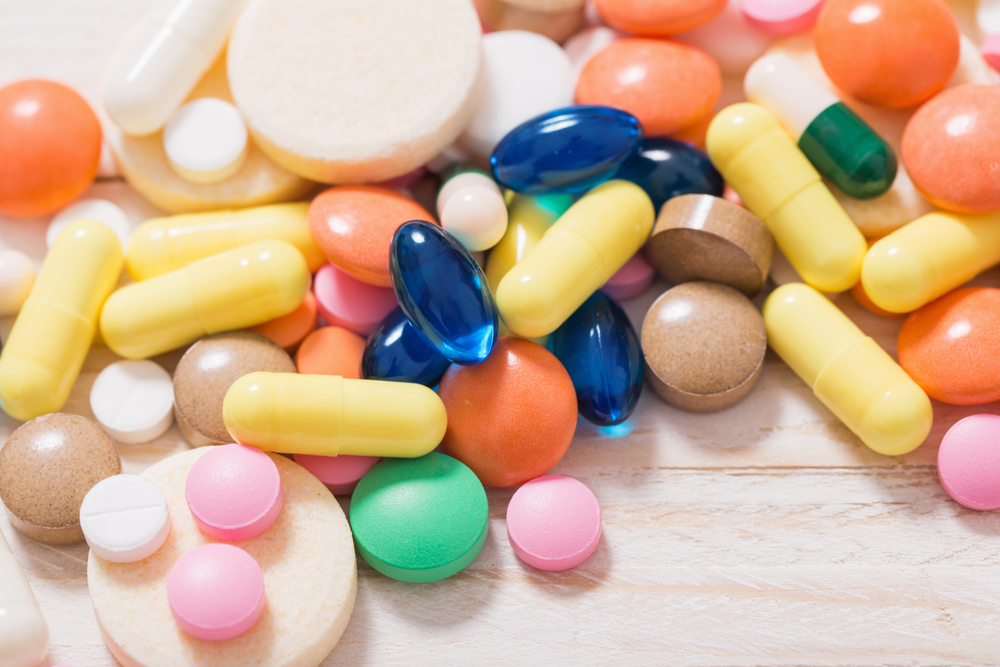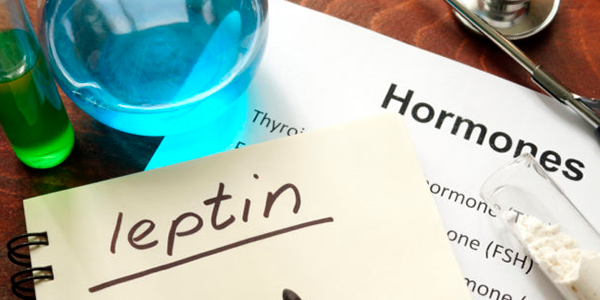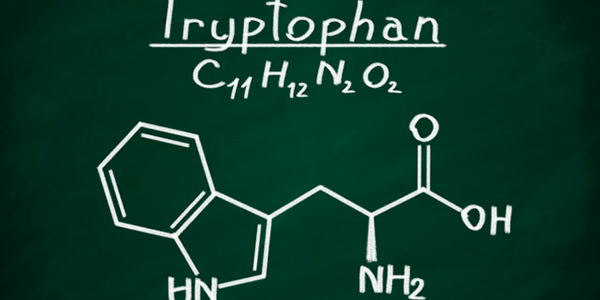Research on Synephrine
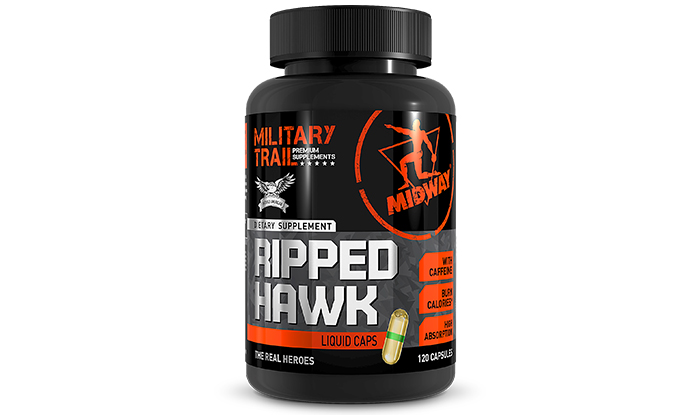
The active principle in Citrus aurantium is synephrine. This amine acts on the α- and β- receptors by activating thermogenesis and determining a ponderal decrease.[1] Obesity is a serious health problem throughout the world. More than half of U.S. adults are overweight (61%) and more than a quarter (26%) of U.S. adults are obese. The inability of many individuals to keep their weight in check by diet and exercise has created a need for additional therapeutic means to combat obesity. Despite great effort, the pharmaceutical industry has not come up with the solution; because most weight-loss drugs to date have serious adverse effects to health and well-being. The theory that beta agonists, especially beta 3 agonists, can affect body weight and fat mass is well accepted. Ephedrine has proven time and time again that it is an effective weight loss agent through its ability to increase thermogenesis and quench appetite. However, the publicity concerning adverse reactions has led to its gradual withdrawal from use by many despite the perceived consequences of obesity. Many companies are now substituting Citrus aurantium for ephedra in their formulations. Citrus aurantium, agent containing beta agonists, has been reported to aid in weight loss in two studies and increase thermogenesis, at least to some extent, in three studies. Colker et al. (1999) reported that in a double-blind, placebo-controlled, randomized study the subjects receiving a combination of Citrus aurantium, caffeine and St John’s Wort, lost significant amounts of total body weight while on a strict diet and exercise. Those in the placebo and control groups who also were on the same restricted diet did not. However, intergroup analysis showed no statistical significance among the weight changes in the three groups. In contrast, the loss of fat mass in the test group was significantly greater compared to the placebo and control groups. Jones describes an open labeled study performed on 9 women. The subjects showed a mean of 0.94 kg lost during the first week when no product was given and 2.40 kg during the second week when a Citrus aurantium product was taken. Body weight losses were statistically greater during the second week compared to the first week. Since most clinicians would agree that the most weight loss should occur initially coinciding with a greater fluid loss during the first week, these differences are even more remarkable. Three studies reported increased metabolic rates when ingesting Citrus aurantium products, however, at least two of these studies were acute. At present, Citrus aurantium may be the best thermogenic substitute for ephedra. However, more studies are needed to establish this definitively.[2] We questioned whether adrenergic amines extracted from the Seville orange Citrus Aurantium (CA) increases metabolic rate and enhance the thermie response to a 1.7MJ mixed meal (TEF) in lean and obese men and women; the latter had upper-body obesity, a condition associated with defective TEF, attributed to altered SNS. Nine lean (7M, 2F; BMI: 23±1 kg/m waist circumference: 78±2 cm) and 13 obese (4M, 9F; BMI: 35±1 kg/m2 ; waist circumference: l05±3 cm) subjects were studied. With CA: 1) RMR increased more in men vs women (94 vs 42 kJ over 5 h), independently of body composition; 2) urinary epinephrine excretion increased in both groups and dopamine only in men. A 17% lower TEF in obese subjects was no longer significant when controlled forgender. By contrast, there was an effect of gender on TEF that remained significant when adjusted for measures of obesity. Women had a lower TEF that increased to values no longer different from men with CA. CA did not affect TEF in men. CA had no cardiovascular effects. Thus, CA ingestion increased thermogenesis by 4% above RMR and enhanced the lower TEF of women by 29% (46kJ).[3]
Research on Guggulsteronesg
(Z)-Guggulsterone, a ketosteroid isolated from the oleoresin of the dry exudate of Commiphora mukul, has been shown to stimulate the thyroid function in rats. This drug is now shown to counteract the thyroid-suppressant activity of a known thyroid inhibitor (carbimazole). This set of observations distinguishes the thyroid stimulatory action of (Z)-guggulsterone from that of the thyroid stimulatory hormone (TSH) of pituitary origin. It is, therefore, concluded that the action of (Z)-guggulsterone is not mediated by the pituitary.[4] An investigation was made to find out the importance of gugulu (Commiphora mukul) in thyroid function of mice and to reveal the possible involvement of lipid peroxidation (LPO), if any. While no marked change in the concentrations of serum thyroxine (T4) was observed, triiodoth yronine (T3) concentration and T3/T4 ratio were enhanced following the administration of gugulu extract (0.2 g/kg b. wt./d for 15 days). A concomitant decrease in LPO was also noticed in liver, the principal site of T3 generation, suggesting that gugulu induced increase in T3 concentration is LPO mediated.[5] The purpose of this study[6] was to determine the effects of a guggulsterone phosphate salt compound on body composition and mood states in overweight adults. In a double-masked, randomized, placebo-controlled study, 20 subjects with a body-mass index >25 kg/m2 were separated into 1 of 3 groups. The experimental group received guggulsterones 750 mg and phosphate 1650 mg daily, the placebo group received maltodextrin capsules, and the control group received no treatment for 6 weeks. Subjects were instructed to follow the American Heart Association Step One diet and a 3-day-per-week circuit exercise program. Body weight decreased significantly in the experimental group (3.2%, P < 0.05) and fat mass decreased significantly in the experimental (20.6%) and control (8.6%) groups (P < 0.01). However, between-group differences in weight loss were not statistically significant. Profile of Mood States (POMS)-fatigue decreased significantly in the experimental group (63.7%, P < 0.01), whereas POMS-vigor increased significantly in the experimental group (32.3%, P < 0.01) and decreased significantly in the placebo group (15.6%, P < 0.01). Results of this study suggest that ingestion of a guggulsterone phosphate salt compound concurrent with regular exercise will result in a significant loss of body weight and improved mood states.
Research on Yohimbine
Investigations[7] were carried out to analyse the interactions of alpha 2-antagonists (yohimbine, idazoxan, SK & F-86,466) with human fat cell alpha 2-adrenoceptors. All the alpha 2-antagonists enhanced the lipolytic potencies of epinephrine with an order of potency: yohimbine greater than idazoxan greater than SK & F-86,466; the same order was also found in 3H-yohimbine competition studies on human fat cell membranes. The most potent agent, yohimbine, was administered orally in humans to define the conditions of appearance and the time-course of a putative lipid-mobilizing action. Oral yohimbine administration (0.2 mg kg-1) elevated plasma glycerol and non-esterified fatty acids in fasting healthy subjects without significant action on heart rate or blood pressure during the time-course of the experiment. The lipid-mobilizing action of yohimbine was reinforced during physical exercise, completely suppressed after a meal and partially blocked by administration of propranolol (0.5 mg kg-1; 60 min before yohimbine). Plasma norepinephrine concentrations were increased (40-50%) after oral yohimbine administration. The rise in plasma catecholamine concentration elicited by yohimbine was not modified by propranolol treatment. The lipid-mobilizing effect of yohimbine could be attributable to: (i) the increase in synaptic norepinephrine with a resultant increment in lipolysis by beta-adrenergic agonism; (ii) a decrease in alpha 2-adrenoceptor stimulation of human fat cell alpha 2-adrenoceptors; (iii) a blockade of presynaptic alpha 2-adrenoceptors. The use of highly selective alpha 2-antagonists will allow investigations into alpha 2-adrenoceptors, which may represent a novel locus for pharmacological intervention in lipid-mobilization strategies. Adrenergic modulation of lipolysis was determined in obese and lean women. Epinephrine was infused alone, or in combination with propranolol, or with phentolamine. In both obese and lean subjects slight alpha- and prevalent beta-adrenergic lipolytic responsiveness was observed. alpha-adrenergic blockade by yohimbine potentiated lipolysis and exercise energy expenditure. Yohimbine application during the slimming treatment increased weight loss without side effects.[8] Yohimbine, an alpha 2-receptor antagonist, was examined for its suitability in the treatment of obesity. Twenty female obese outpatients were subjected to a 3-week low-energy diet (1,000 kcal/day), after which they were randomly allocated according to a double-blind study[9] protocol to two treatments: 10 subjects received 5 mg yohimbine per os 4 times a day and 10 received a placebo for 3 weeks, in addition to a low-energy diet of 1,000 kcal/day. Before inclusion in the study, as well as the end of each of the 3-week treatment periods, thermogenesis (resting and exercise energy expenditure) was assessed by indirect calorimetry; serum noradrenaline concentration was taken as an index of sympathetic system activity and serum glycerol level as an index of lipolysis. Yohimbine significantly increased the mean weight loss in patients on a low-energy diet: 3.55 +/- 0.24 kg (yohimbine) vs. 2.21 +/- 0.37 kg (placebo), P less than 0.005. With yohimbine, a steady level of effort-induced energy expenditure and sympathetic system activity was maintained. No significant effect of yohimbine on lipolysis was observed under the experimental conditions of this study. In another group of 15 obese inpatients (11 women and 4 men) the influence of 15 mg yohimbine per os vs. placebo on gastric emptying of a radiolabelled solid meal was examined in a double-blind manner with the use of a gamma camera. No significant effect of yohimbine on gastric emptying was revealed–the mean gastric transit time was 42.0 +/- 0.4 min after placebo and 41.8 +/- 0.5 min after yohimbine. The results obtained warrant further research on the applicability of alpha 2-receptor inhibitory drugs as a supplementary management in the treatment of obesity.
Research on Caffeine
The magnitude of coffee-induced thermogenesis and the influence of coffee ingestion on substrate oxidation were investigated in 10 lean and 10 obese women, over two 24-h periods in a respiratory chamber. On one occasion the subjects consumed caffeinated coffee and on the other occasion, decaffeinated coffee. The magnitude of thermogenesis was smaller in obese (4.9 +/- 2.0%) than in lean subjects (7.6 +/- 1.3%). The thermogeneic response to caffeine was prolonged during the night in lean women only. The coffee-induced stimulation of energy expenditure was mediated by a concomitant increase in lipid and carbohydrate oxidation. During the next day, in postabsorptive basal conditions, the thermogenic effect of coffee had vanished, but a significant increase in lipid oxidation was observed in both groups. The magnitude of this effect was, however, blunted in obese women (lipid oxidation increased by 29 and 10% in lean and obese women, respectively). Caffeine increased urinary epinephrine excretion.[10] Twelve young healthy male volunteers participated in a randomized blind study[11] in which they consumed 150 ml decaffeinated coffee with or without 200 mg added caffeine. Resting metabolic rate by indirect calorimetry (ventilated hood), skin temperature on chest, arm, thigh, calf and abdomen, and internal temperature (rectal) were measured in the fasting state and up to 3 h after coffee consumption. All treatments were done in duplicate. After caffeine consumption the metabolic rate increased immediately with 0.2 ± 0.2 kJ/min (p < 0.05) and remained elevated for the 3 h during which measurements were taken. Mean total caffeine-induced thermogenesis was 0.30 ± 0.20 kJ/min, which means a mean increase in the metabolic rate of 7 ± 4% during 3 h. The effect of placebo and 100, 200, and 400 mg oral caffeine on energy expenditure, plasma concentrations of substrates and hormones, blood pressure, and heart rate was investigated in a double-blind study[12] in healthy subjects (aged 22 to 32) who had a moderate habitual caffeine consumption. Caffeine increased energy expenditure dose dependently and the thermogenic response was positively correlated with the response in plasma caffeine (r = 0.52; p < 0.018), plasma lactate (r = 0.79; p < 0.000001), and plasma triglyceride (r = 0.53; p < 0.02). Single-dose oral administration of 100 mg caffeine increased the resting metabolic rate of both lean and postobese human volunteers by 3- 4% (p < 0.02) over 150 min and improved the defective diet- induced thermogenesis observed in the postobese subjects. Measurements of energy expenditure (EE) in a room respirometer indicate that repeated caffeine administration (100 mg) at 2-h intervals over a 12-h day period increased the EE of both subject groups by 8-11% (p < 0.01) during that period but had no influence on the subsequent 12- h night EE. The net effect was a significant increase (p < 0.02) in daily EE of 150 kcal in the lean volunteers and 79 kcal in the postobese subjects.[13] According to the Institute of Medicine (IOM), “Caffeine has been shown clinically to induce a variety of positive effects that have contributed to its extensive use worldwide. Caffeine use has been associated with increased alertness and enhanced physical performance, and as a countermeasure to the effects of sleep deprivation.” IOM also indicates that the levels of caffeine that have consistently enhanced endurance performance range from about 200 to 600 mg.[14] The effects of caffeine (0 mg/kg, 1 mg/kg, 3 mg/kg) and time of day (TOD) on human performance were studied in 188 male psychology students using a multiple forceband discrimination task (MFDT) and subjective ratings. Self-rated measures of energy level were affected by TOD and caffeine, while mood was affected by TOD. Energy level decreased throughout the day and was offset by caffeine which increased energy level independent of TOD. Self-reported anxiety was not affected by TOD or caffeine. Mood was affected by TOD in a complex cubic trend with late morning and late evening peaks 12 hours apart. MFDT performance was affected by TOD, caffeine dosage, and their interaction. Trend analyses showed varying patterns of TOD effects across peak force variability, response latency, response duration, and correct responding.[15] The FDA has indicated that caffeine is a stimulant that “helps restore mental alertness or wakefulness during fatigue or drowsiness,” and identifies it for this purpose in its monograph on over-the-counter stimulants. The amount of caffeine identified as effective is a dose of 100 mg.[16]
Research on Bioperine
BioPerine® is a black pepper extract that has been shown in human clinical studies to increase the absorption of nutrients in dietary supplements. Gastrointestinal absorption of all the studied nutrients, as measured by amounts present in the blood, increased dramatically when administered with BioPerine® as compared to the control group receiving the nutrient alone. Selenium levels increased by 30%, beta-carotene increased by 60%, and the vitamin B6 increase was slightly higher than beta-carotene. All studies used BioPerine® in the amount of 5 mg per dose. BioPerine® is included in this formulation to promote a more rapid response.[17]
References
[1] Morou CO, Basile G. Obesity and medicinal plants. Fitoterapia. 2000;71:S73-S82. [2] Preuss HG, DiFerdinando D, Bagchi M, Bagchi D. Citrus aurantium as a thermogenic, weight-reduction replacement for ephedra: an overview. Journal of medicine. 2002;33(1-4):247-64. [3] Adam MM. The thermogenic effect of beta-sympathicomimetic compounds extracted from Citrus Aurantium, in humans. Master’s thesis. School of Dietetics and Human Nutrition. McGill University, Faculty of Graduate Studies and Research; 2001. [4] Tripathi YB, Tripathi P, Malhotra OP, Tripathi SN. Thyroid stimulatory action of (Z)-guggulsterone: mechanism of action. Planta Med 1988;54:271-7. [5] Panda S, Kar A. Gugulu (Commiphora mukul) induces triiodothyronine production: possible involvement of lipid peroxidation. Life Sci 1999;65:PL137-41. [6] Antonio J, Colker CM, Torina GC, et al. Effects of a standardized guggulsterone phosphate supplement on body composition in overweight adults: a pilot study. Curr Ther Res 1999;60:220-7. [7] Galitzky J, Taouis M, Berlan M, et al. Alpha 2-antagonist compounds and lipid mobilization: evidence for a lipid mobilizing effect of oral yohimbine in healthy male volunteers. Eur J Clin Invest 1988;18:587–94. [8] Zahorska-Markiewicz B, Kucio C, Piskorska D. Adrenergic control of lipolysis and metabolic responses in obesity. Horm Metab Res 1986;18:693–7. [9] Kucio C, Jonderko K, Piskorska D. Does yohimbine act as a slimming drug? Isr J Med Sci 1991;27:550–6. [10] Bracco D, Ferrarra JM, Arnaud MJ, et al. Effects of caffeine on energy metabolism, heart rate, and methylxanthine metabolism in lean and obese women. Am J Physiol 1995; 269(4 Pt 1):E671-8. [11] Koot P, Deurenberg P. Comparison of changes in energy expenditure and body temperatures after caffeine consumption. Ann Nutr Metab 1995; 39(3):135-42. [12] Astrup A, Toubro S, Cannon S, et al. Caffeine: a double-blind, placebo-controlled study of its thermogenic, metabolic, and cardiovascular effects in healthy volunteers. Am J Clin Nutr 1990; 51(5):759-67. [13] Dulloo AG, Geissler CA, Horton T, et al. Normal caffeine consumption: influence on thermogenesis and daily energy expenditure in lean and postobese human volunteers. Am J Clin Nutr 1989; 49(1):44-50. [14] Institute of Medicine. Caffeine for the Sustainment of Mental Task Performance: Formulations for Military Operations. Washington, DC: National Academy Press, 2001. Available at: http://books.nap.edu/books/0309082587/html/index.html. [15] Miller LS, Lombardo TW, Fowler SC. Caffeine and time of day effects on a force discrimination task in humans. Physiol Behav 1995;57(6):1117-1125. [16] Food and Drug Administration. Code of Federal Regulations: Part 340—Stimulant Drug Products for Over-The-Counter Human Use, Subpart A and B; 2000: 235. [17] BioPerine®. Sabinsa Corporation. 2010. Retrieved March 8, 2012 from http://www.bioperine.com/clinical.html.



